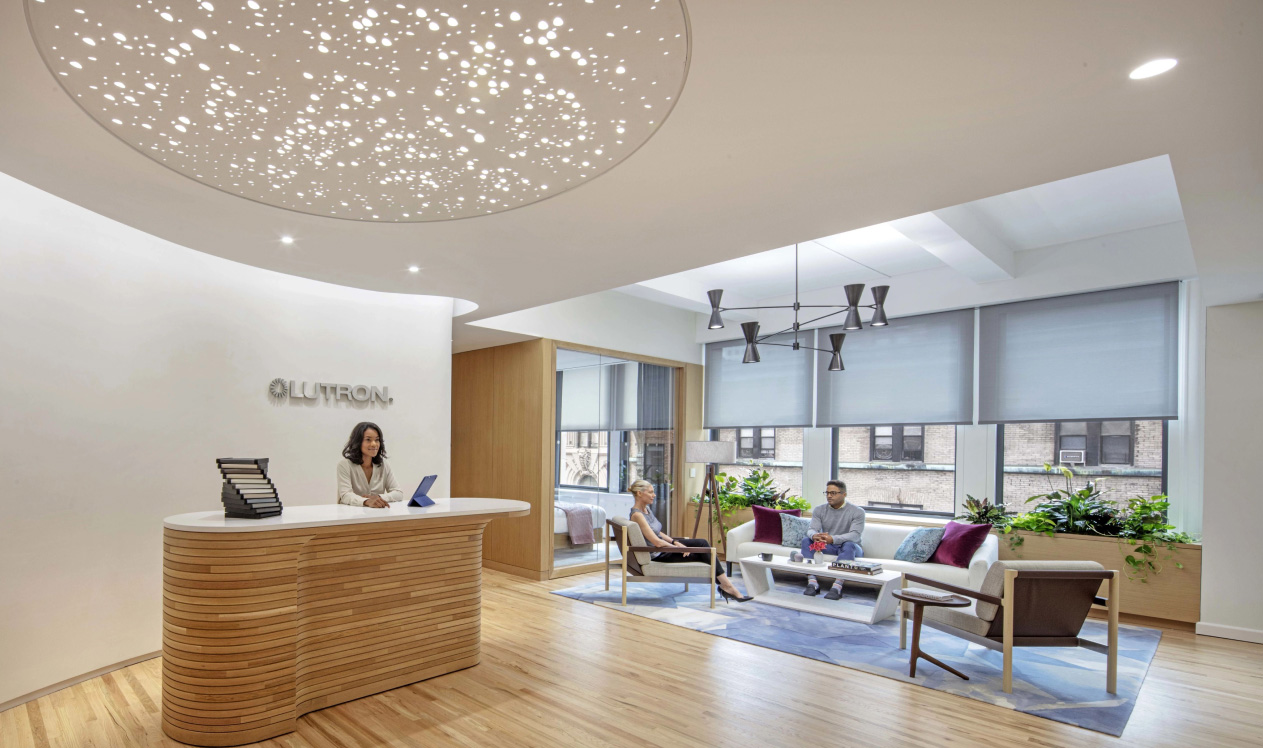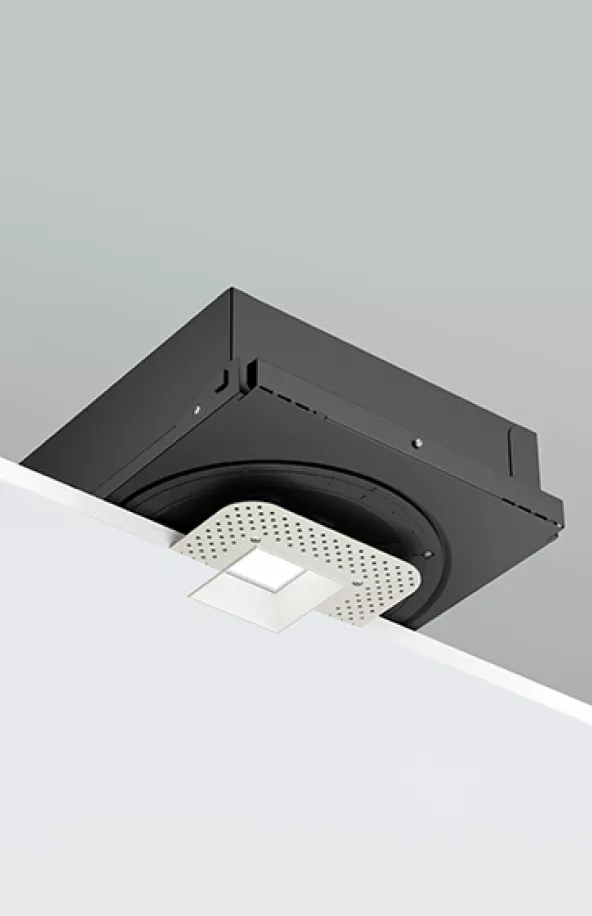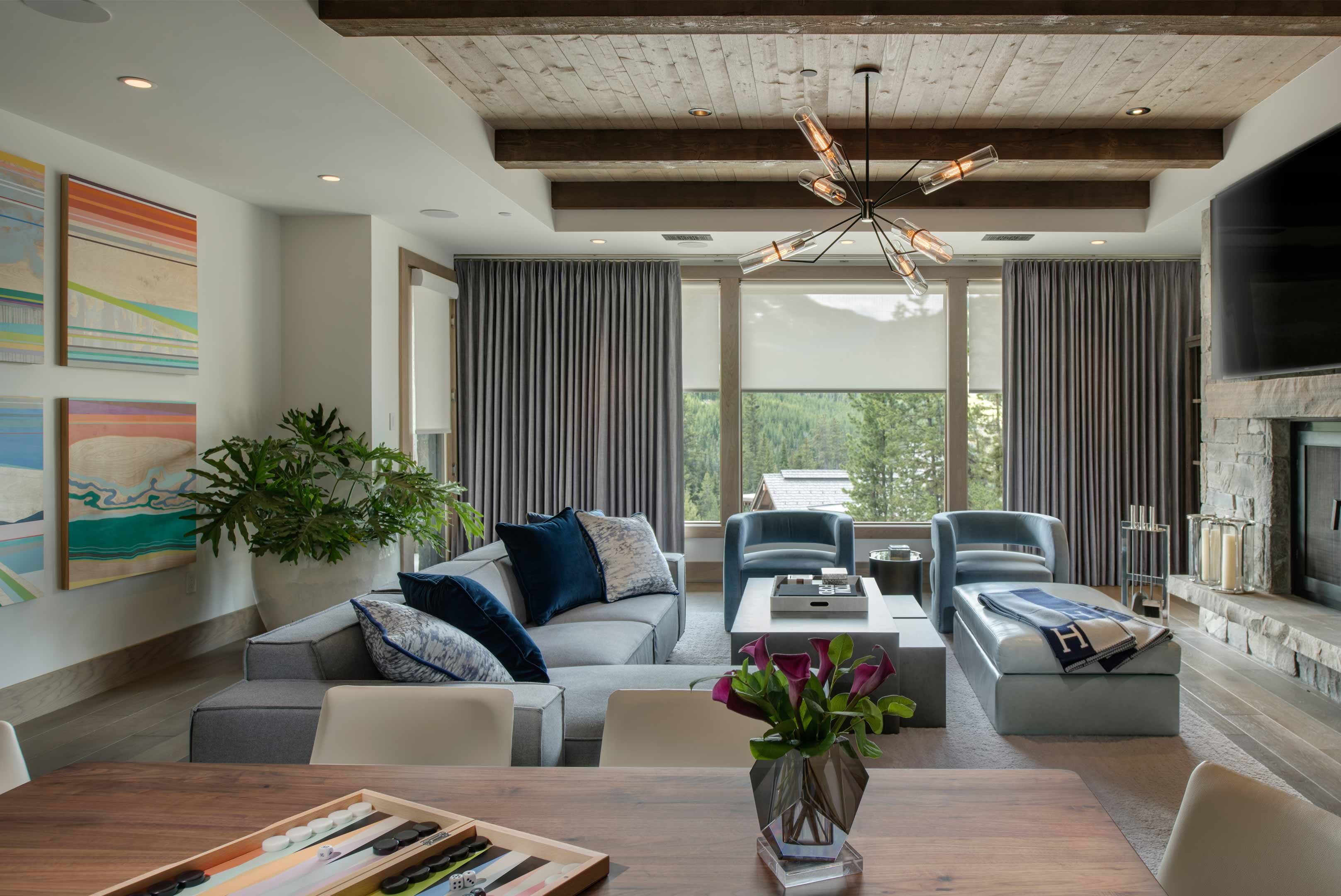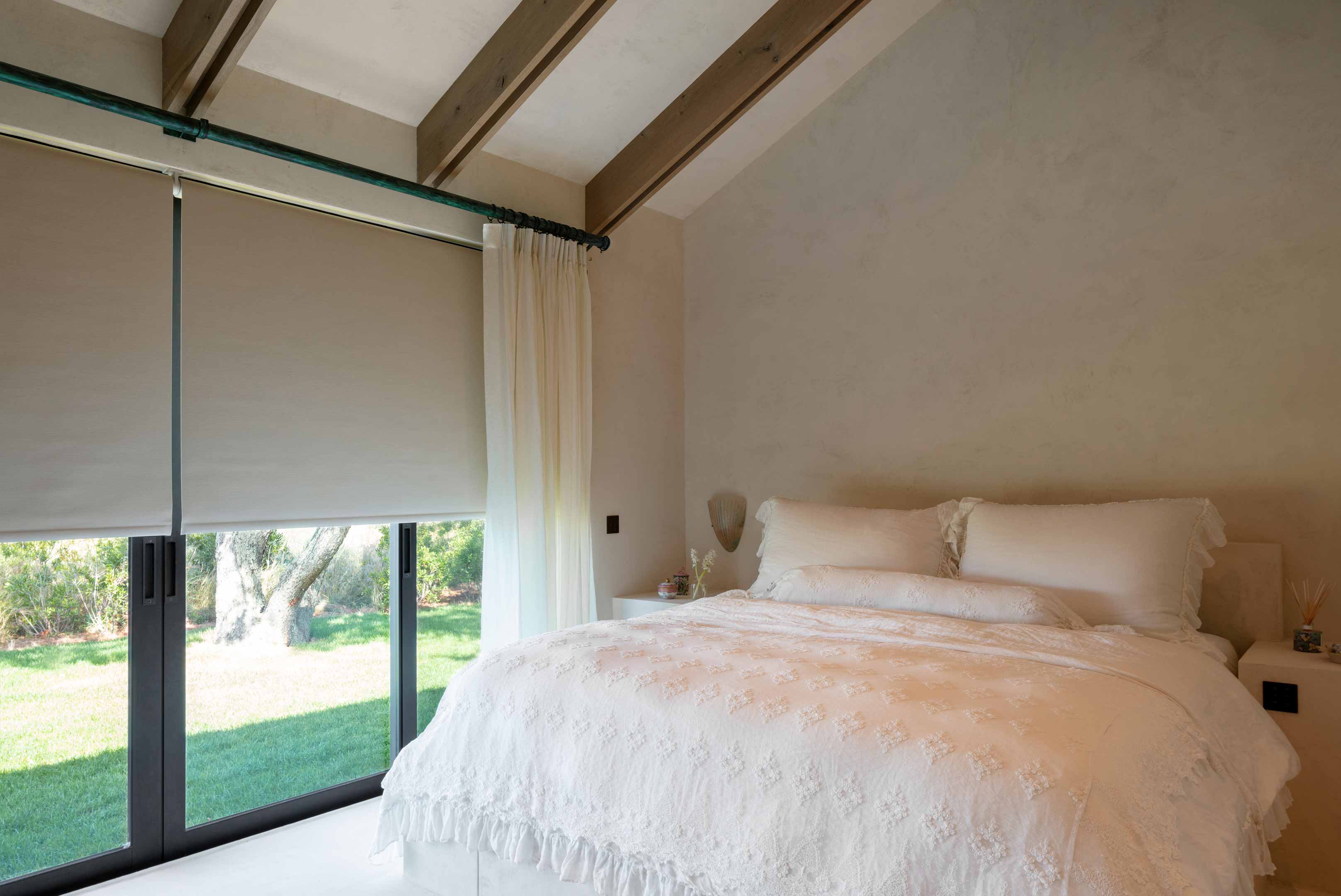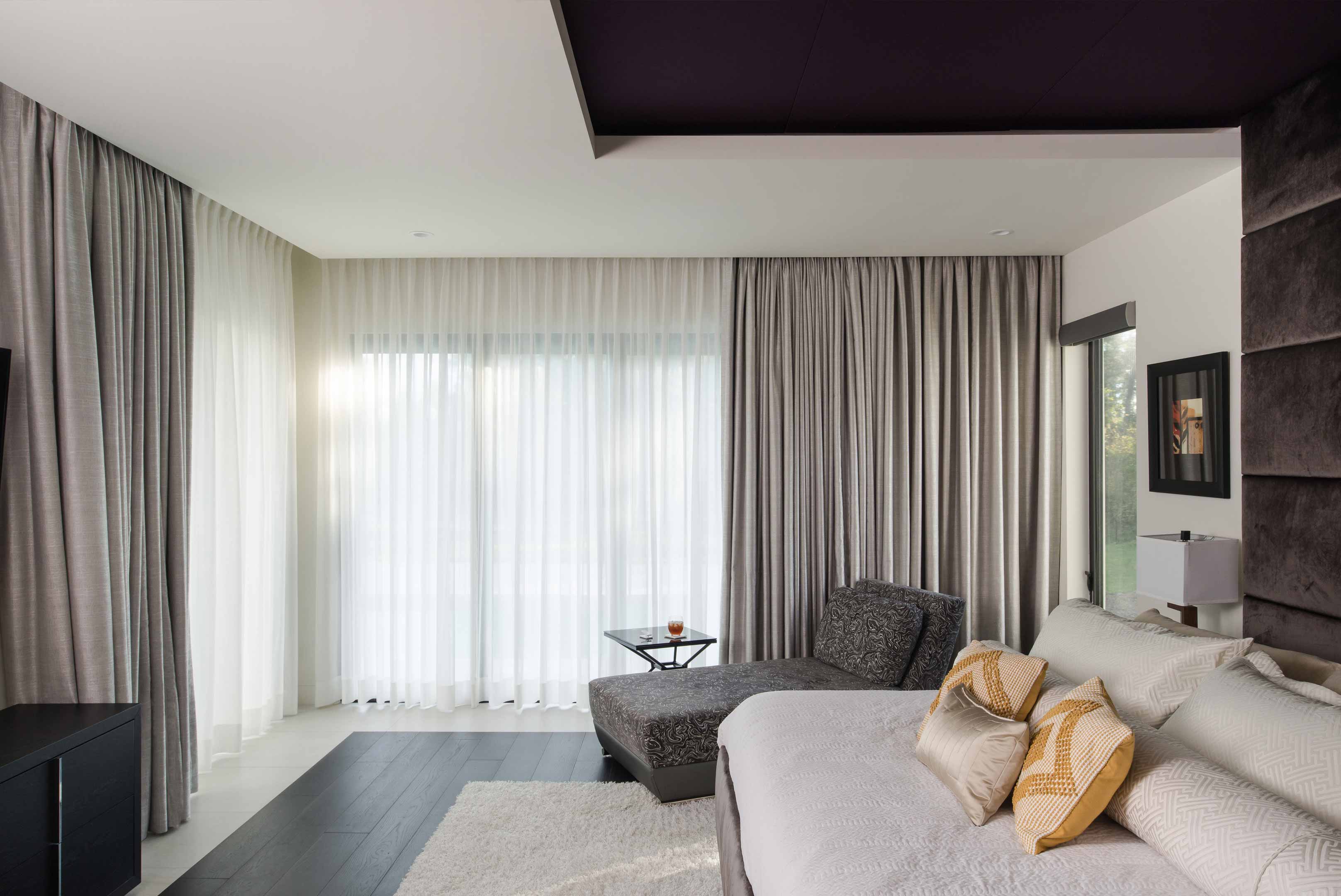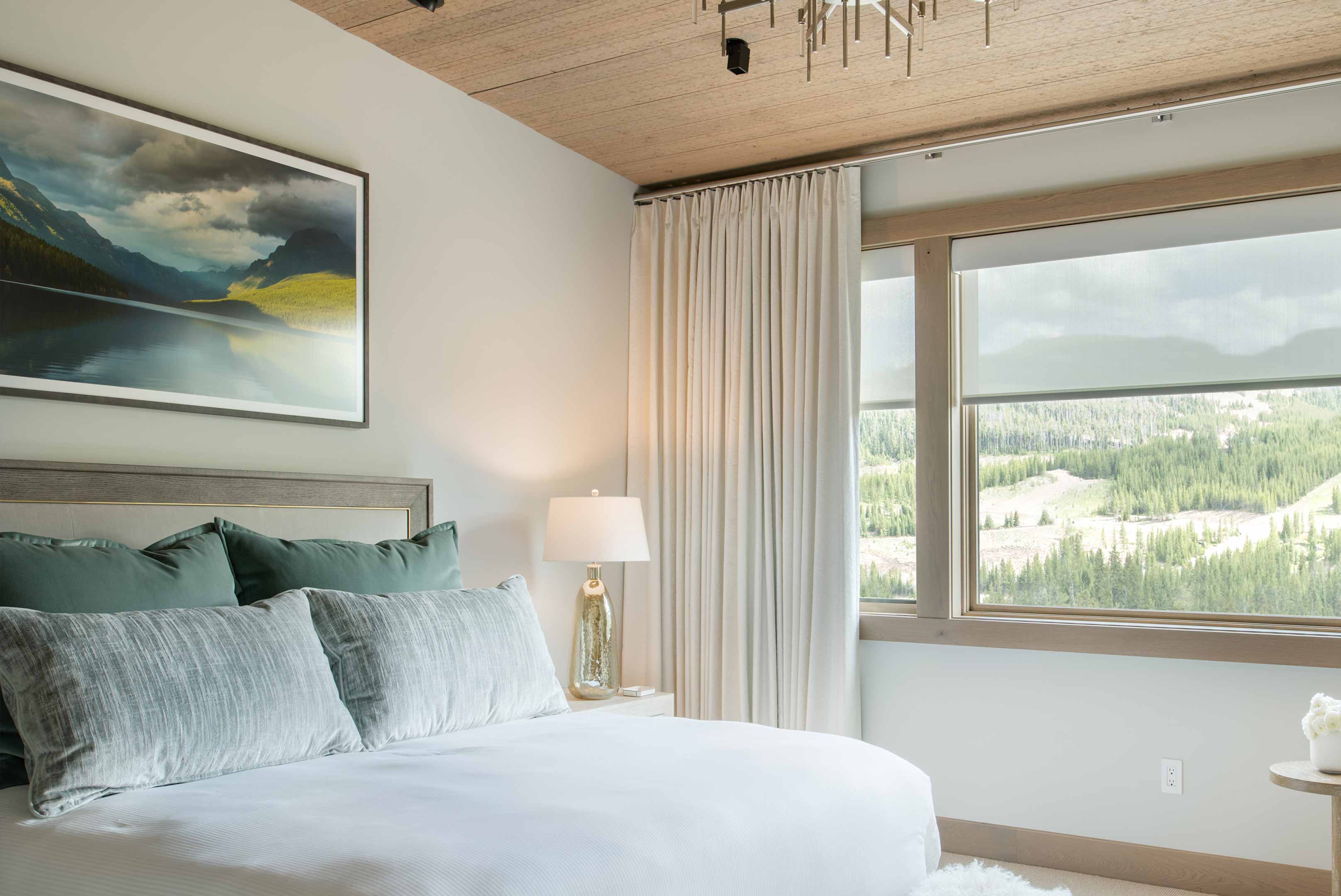How to Integrate Automated Shades into Layered Window Treatments
August 10, 2023
As in fashion, layering in interior design and architecture gives a space character, versatility, and visual interest. Effective layering involves knowing how to use different pieces individually and understanding how they can work together in a space.
Author
Lutron
Date
08.10.23
Read
30 minutes
30 Min
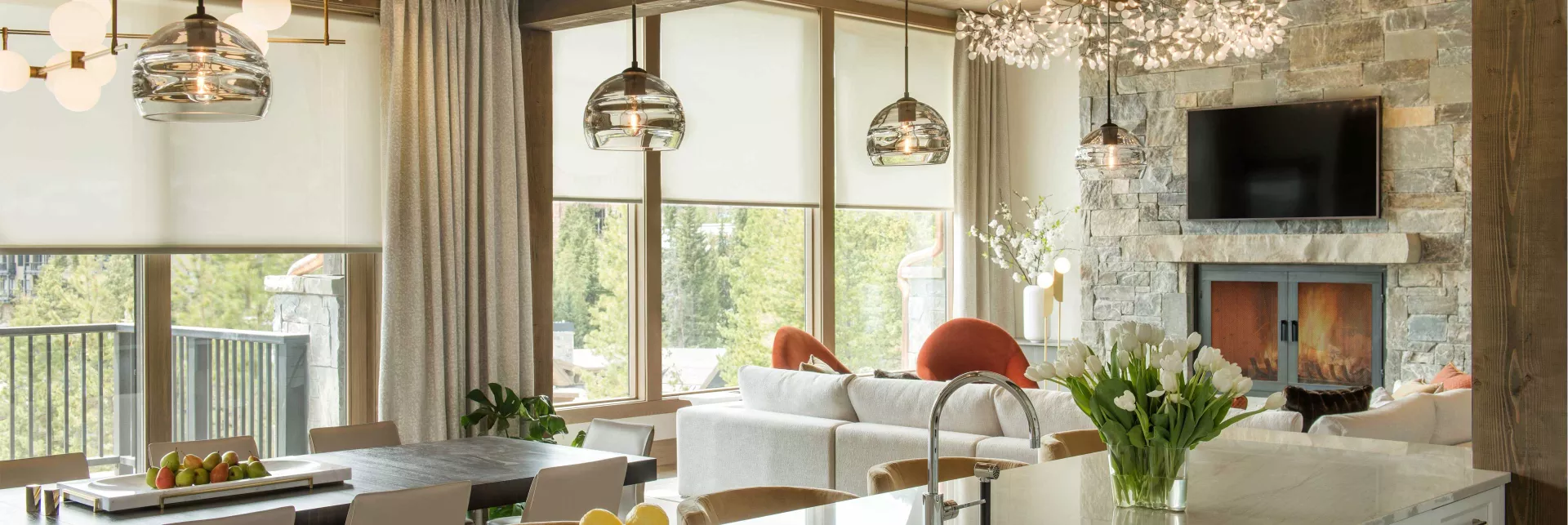
Layered window treatments add depth and dimension to windows and offer greater control of ambient light and privacy. This enables designers to address a range of ambient light moments throughout the day without compromising on clients’ priorities.
When shades are layered, clients benefit more from automation. They might program roller shades in their living room to lower during the day, for instance—and Roman shades to lower at night for privacy. With this automation, they can maximize control of natural light in their homes.
The Ambient Lighting Layer Starts with Daylight
Masterful lighting design incorporates layers. Using different kinds of lighting, from ambient to task and accent lighting, makes a space more visually interesting and functional. Ambient lighting, the base layer of lighting design, comes from a variety of sources, including daylight. This makes window treatments—which provide complete design control over natural light—a key ingredient in the ambient lighting layer.
Motorized shading can allow diffused light to enter a kitchen during the day, creating beautiful, subtle shadows that move across stone counters. It can also devise a home theater environment that eliminates glare and visual strain, or a bedroom with the perfect amount of light for rising gradually in the morning. Layered window treatments offer myriad options to help a designer achieve customizable and sophisticated environments.
Take Complete Design Control over Natural Light with Automated Shades
Designers can get the full benefits of natural light control by specifying each textile’s openness and automating its movement. Openness, or opacity, refers to the tightness of a textile’s weave, which corresponds to its ability to let light through.
Typically, sheer shades have openness factors ranging from 1%–10%. They let daylight enter the space and keep users connected to their surroundings.
With automated shades, clients can tailor the amount of light that enters a room to fit the time of day, activity, or need for glare reduction and privacy. By setting shades to move on schedules—according to the time of day, day of the week, or time of year—they can maximize daylight and enjoy a connection with the outdoors. Talk with clients about how they use their spaces to help them take full advantage of the flexibility automation offers.
Layering Opacities and Colors Between Window Treatments
Opacities
When layering window treatments, choose fabrics that regulate ambient light with precision. Interior designer Kevin Gray recommends using Lutron's roller shade with a solar screen as a base layer for privacy and glare control during the day.
“In New York, for example, if you face east or west, you get sunlight blazing all day long. You can use solar screens to keep out glare and protect art and furniture from fading,” Gray explains. “On top, I use a sheer weave or drapery panels, either horizontal or vertical, that slide back and forth on a Lutron track. I often use Roman shades, which are decorative and versatile. The fabric softens the solar screen and makes rooms feel more intimate.”
Color and Design
Consider some guidelines when choosing window treatments to layer in a space. In general, coordinate colors across layers and windows, so the treatments work in concert with the room’s design. Smaller rooms with multiple windows of similar size and shape often look more natural with consistent window treatments, while larger rooms with different kinds of windows might benefit from mixing styles. In a kitchen with a bay window on one wall and standard double-hung windows on another wall, use different treatments to draw attention to the bay window. Also, consider using a single treatment that spans multiple windows. For example, a single drapery track can run along a wall of windows.
Clients who value curb appeal can opt for a uniform treatment on the inside of the window to maintain continuity. But in each room, prioritize the front layer’s design, which will be the most visible in the space. Think of the window-facing treatment as a more functional layer, while the room-facing treatment dresses up the window, adding decorative value and ambiance. This is why designers often choose to layer soft top treatments, such as Romans and drapes, over hard treatments, such as rollers or honeycomb shades.
“I also use lighter treatments like side panels in living rooms to soften the space and make it look homier.”
Kevin Gray
Interior Designer, Kevin Gray Design
Soft Treatments
Soft treatments are very popular among designers for all styles of homes, from traditional to modern, and for any room. Because they’re usually outside mounted, they’re also practical for windows with small pockets or openings that make inside mounting more complicated. “Soft treatments can be installed on Lutron tracks with Lutron automation systems, like Sivoia QS for Romans,” explains Gray, “but the fabrics designers select are the customer’s own material (COM). Designers buy a material and give it to their supplier, who makes the shade with Lutron systems.”
In bedrooms, soft fabrics can create intimacy and dampen sound in the space. “I also use lighter treatments like side panels in living rooms to soften the space and make it look homier,” says Gray. “You can either let the fabric disappear by choosing a style that matches everything else in the space, or if you want a decorative punch, use a more unique color or texture. For example, in a kid’s bedroom you might choose a more fun, colorful fabric.”
A particularly memorable project for Gray was a penthouse apartment on Sutton Place in New York. First, he used a solar screen to protect the home’s artworks. “Then I added a drape that was almost a moire of bronze—it looked like an evening gown—with grommets and rivets, to bring a luxurious, soft feel to a room that needed to be lightened up. Because the artwork was so severe, I wanted to play with contrasts. If it's an old apartment, you might want the window treatments a bit more modern. Then you can use a unique fabric and mix new and old to tie it through.” Layering window treatments allowed Gray to meet the space’s lighting needs and bring glamour and warmth to the design.
There are several kinds of fabrics and ways to integrate them into layered window treatments.
Sheer drapes and rollers don’t provide significant insulation from outside temperatures but can protect furniture, art, rugs, and even wood surfaces from damaging UV rays. This makes sheer fabric ideal for spaces where diffusing light evenly tends to be more important than blocking it, such as kitchens, living and dining rooms, and bathrooms. When layered with room-darkening or blackout treatments, sheer fabric is also appropriate for bedrooms, home offices, and media rooms.
Lutron’s solar screen fabrics are available in different openness factors: 1%, 3%, 5%, and 10%. “The looser and more open the weave, the more light it lets in,” explains Gray. “The tighter it is, the less light enters. I usually pick 5%–7% to maintain a view outside. If the artwork is very expensive, and the window faces east or west, then I'll use a bit of a tighter weave, just as I would in a bedroom.”
To control glare and improve visual comfort, choose a fabric with an openness factor of less than 5%—ideally with a dark color facing the interior. If you want to maintain a view outside, use a fabric with an openness factor of 5% or more, also in a dark color. To optimize energy efficiency, try a dual-sided sheer weave with an openness of less than 5%, with a light-colored fabric facing the glass.
Gray recommends using a tighter weave in spaces like bathrooms, for privacy, especially if neighbors or passersby can see in. “I’d use a 1% or 2% openness, so they can really only see a silhouette. If there are no neighbors, then you can do whatever you want—no one can see—so you might choose 5% or 10% openness.”
For windows that get a lot of direct sunlight, select durable fabrics. “When you use a natural linen or a natural silk, you have to put a blackout lining behind it,” explains Gray. “Even so, the drapery returns can still get bleached.” Instead, use more delicate fabrics in spaces that don’t receive as much direct sunlight or rooms with northern or southern exposures. All Lutron fabrics are engineered and tested to be durable for over ten years, so designers can be confident that their Lutron shades will last.
Layer sheers with room-darkening and blackout treatments to create versatile ambient lighting scenes during the day. For example, a room-darkening honeycomb shade might be tucked under an elegant sheer Roman in a home office. The reverse approach also works: pair a sheer shade with a blackout drape in a bedroom to provide more ambient light options. Then, program automated shades to open the blackout gradually in the morning while lowering the sheer shade to keep light diffuse and gentle.
You can also layer two sheer fabrics to create different ambient light environments throughout the day. A room that gets a lot of direct afternoon sunlight would benefit from a sheer treatment in a dark color to reduce glare and improve visibility. At night, a lighter treatment would give this same room a cozy ambiance and offer greater privacy. A dark sheer roller paired with a light sheer Roman would allow for these scenarios in a living room, kitchen, or other room where room darkening is not a priority.
Romans or drapes in room-darkening fabrics are a good option in bedrooms for people who want a significant darkening effect to promote good sleep but aren’t bothered by a bit of sunlight peeking through in the morning. They’re also effective at blocking most exterior lights at night, such as porch or street lights. Often lined, room-darkening fabrics have insulating properties that help prevent heat gain in the summer and heat loss in the winter.
Designers can combine room-darkening shades with more open treatments to create distinct lighting moods and moments. For example, layer a room-darkening Roman over a sheer shade to make the most of light as it transitions throughout the day. Put automated treatments on timers, so solar shades descend when the sun enters the space directly, and Romans lower at night or when no one is home. Lined drapes that extend beyond the window opening capture much of the light that filters in around the sides and are another great option for room darkening. You can also dress up a room-darkening roller by layering sheer drapes on top for an elegant visual effect.
Blackouts are commonly used in bedrooms, nurseries, home theaters, and media rooms. They offer a crucial benefit to light-sensitive people, whose sleep can be disturbed when even a small amount of light enters the room. “Guest bedrooms should be fitted with blackout shades as well,” advises Gray. “Sometimes people don’t know if their guests will be light sensitive, so it’s good to give them the option of total darkness.”
Because blackout shades block all light, it’s important to layer them with treatments that filter light for moments in the day when occupants don’t want complete darkness. Gray suggests using Lutron’s dual roller system to layer a blackout, such as Bouclé, with a sheer solar screen, like T Screen. “This takes up less space in the drapery pocket because it uses a single rod for both blinds,” he says. Since rollers can be mounted inside window frames, they leave plenty of space to layer soft treatments outside or on top of the frame.
Rollers are a popular choice for blackout treatments, although they can only provide total darkness when side channels are installed.
Gray also recommends layering Roman shades or lined drapes over solar mesh for an elevated blackout experience in bedrooms. “Generally, I use Roman shades or lined fabric in bedrooms. For Romans, ensure that the shade is a few inches bigger than the window to fully block the light.” Romans are ideal for this application, with near-blackout performance and zero need for a side channel or additional design work. As for room-darkening applications, lined drapes that extend beyond the window opening are also effective for blackout fabrics.
Keep in mind that blinds should not be used for blackout applications. Window treatments with slats have light gaps along each slat’s edge—plus, the material’s depth prevents the use of side channels to block out additional light. Instead, install a separate roller with side channels behind the blind for a blackout effect. Blinds, such as Lutron Horizontal Sheer Blinds with Palazzo fabric, are very well-suited for applications where both room-darkening and view-through are desired from a single solution.
“You can either let the fabric disappear by choosing a style that matches everything else in the space, or if you want a decorative punch, use a more unique color or texture.”
Kevin Gray
Interior Designer, Kevin Gray Design
Fine-Tune Daylight with Motorization and Intelligent Hembar Alignment
The more sophisticated a window treatment, the greater the benefit of automation. In particular, windows with layered shades can be cumbersome to adjust manually— causing users to leave them in the same position more often than not. A study by the US Department of Energy found that only 25% of manual residential window coverings are moved daily. This means that most people with manual shades aren’t getting the benefits of daylight management.
Motorized layered window treatments enable designers to fine-tune light for different levels of ambient lighting throughout the day and the year. For example, a west-facing living room might need a solar shade to prevent glare and UV absorption during summer afternoons, a honeycomb shade to retain heat during the winter, and drapery for year-round privacy. Lighting control systems can set shades to move on schedules that prioritize different needs depending on the time of day or year.
Some automation technologies can be complicated or imprecise, with misaligned shades creating visual distraction. The eye can identify misalignment within as little as ¼ inch from five feet away, making even the slightest variation detectable.
Lutron’s Intelligent Hembar Alignment (IHA) eliminates the possibility of shade misalignment, synchronizing motorized shades in a room or home, maintaining alignment within ⅛ inch while in motion. Nearly all Lutron roller shades include this technology, which, with HomeWorks, can be further fine-tuned for custom applications.
Along with IHA, Lutron’s system for intelligent tilt alignment maintains uniform tilt and lift positions across blinds. Users can adjust blinds on their phones or a wall-mounted keypad from full open tilt in either direction to a fixed, closed angle. They can also raise or lower blinds without affecting the tilt. Lutron’s systems allow users to store and recall preset height and tilt angles, and to set schedules.
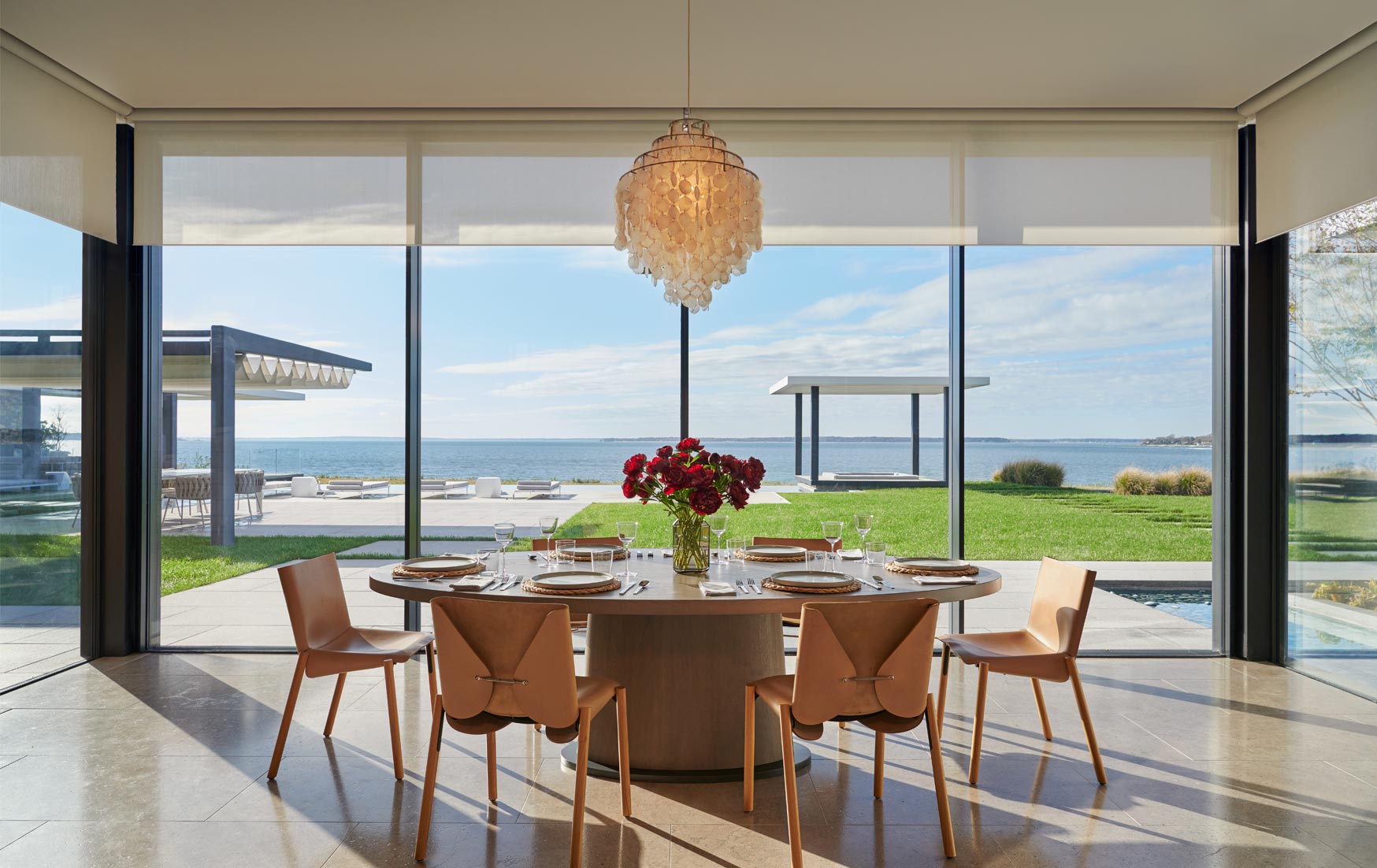
Synchronized shades confer visual elegance and continuity in a space.
Adjust Automated Layered Window Treatments with Seamless Controls
Because shading needs change throughout the day as the sun moves across the sky, the best way to curate different lighting scenes throughout a home is with seamless, beautiful lighting control systems that move motorized shades in unison. Hand-finished keypads, such as Lutron’s Alisse and Palladiom, allow users to adjust every detail of their home lighting system—for optimal daylight, views, beauty, and comfort.
Witness layered window treatments come to life in one of Lutron’s Experience Centers.
Get design support.
Consult with a Lutron residential specification specialist today and learn how Lutron can help you craft elevated experiences with light on your next project.
